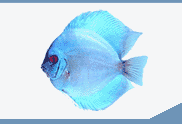

 |
||||||||||||
 |
||||||||||||
| Introduction to Freshwater Fish Parasites | ||||||
| Page 5 of 14 | Pages: 1 . 2 . 3 . 4 . 5 . 6 . 7 . 8 . 9 . 10 . 11 . 12 . 13 . 14 | |||||
Treatment of ciliated protozoan infections Several chemicals commonly used to control ciliated protozoans in freshwater fish are listed below for your convenience. As stated above, most ciliate infestations respond to one chemical treatment; however, fish that do not improve as expected should be rechecked and retreated if necessary. Overtreatment with chemicals can cause serious damage to fish. The reader is also highly encouraged to read Extension Publication 673 (Mississippi State University), Calculation of Treatments, and IFAS Fact Sheet VM-78 , Bath Treatments for Sick Fish . Copper sulfate is an excellent compound for use in ponds to control external parasites and algae; however, it is extremely toxic to fish. Its killing action is directly proportional to the concentration of copper ions (Cu ++ ) in the water. As the alkalinity of the water increases, the concentration of copper ions in solution decreases. Consequently, a therapeutic level of copper in water of high alkalinity would be lethal to fish in water of low alkalinity. Conversely, a therapeutic concentration of copper in water of low alkalinity would be insufficient to have the desired action in water of higher alkalinity. For this reason, the alkalinity of the water to be treated must be known in order to determine the amount of copper sulfate needed. The amount of copper sulfate needed in mg/L is the total alkalinity (in mg/L) divided by 100. For example, if the total alkalinity in a pond is 100 mg/L, the concentration of copper sulfate needed would be 100/100 or 1 mg/L. If you are unsure how to measure the alkalinity of your water, or have never used copper sulfate, contact your aquaculture Extension specialist for assistance. Never use copper sulfate in water that has a total alkalinity less than 50 mg/L. Because of its algicidal activity, copper sulfate can cause dangerous oxygen depletions, particularly in warm weather. Emergency aeration should always be available when copper sulfate is applied to your system or ponds. Copper sulfate should not be run through the biofilter on a recirculation system as it will kill the nitrifying bacteria. If possible, tanks should be taken "off-line" during treatment with copper sulfate. If necessary, clean the biofilter manually to decrease organic debris and residual parasite load. For more information see IFAS Fact Sheet FA-13 , Use of Copper in Aquaculture and Farm Ponds. Potassium permanganate is effective against ciliates as well as fungus and external columnaris bacteria, and it can be used in a pond or vat. Multiple treatments with potassium permanganate are not recommended as it can burn gills. Aeration should be available when potassium permanganate is used because it is an algicide and can cause an oxygen depletion. Potassium permanganate at the prescribed dosage (2 mg/L) does not seem to affect the nitrifying bacteria in a biological filter; however, ammonia, nitrite, and pH should be closely monitored following treatment. See also IFAS Fact Sheets FA-23 , The Use of Potassium Permanganate in Fish Ponds, and FA-37 , Use of Potassium Permanganate to Control External Infections of Ornamental Fish . Formalin is an excellent parasiticide for use in small volumes of water such as vats or aquaria. It is not recommended for pond use because it is a strong algicide and chemically removes oxygen from the water. Vigorous aeration should always be provided when formalin is used. See also IFAS Fact Sheet VM-77 , Use of Formalin to Control Fish Parasites . Used in proper amounts, salt effectively controls protozoans on the gills, skin, and fins of fish. This is an effective treatment for small volumes of water such as aquaria or tanks. Use in ponds as a treatment is generally not recommended due to the large amount of salt and high cost of treatment that would be needed to be effective. Salt should never be used on fish that navigate by electrical field such as knifefish and elephant nose fish. See also IFAS Fact Sheet VM-86 , The Use of Salt in Aquaculture . When using any treatment for fish, a bioassay (a test to determine safe concentration) should be conducted on a few fish before large numbers of fish are exposed. Fish species can react differently to various concentrations of the chemical; therefore, fish undergoing treatment must be monitored closely for adverse reactions. If the fish negatively react to treatment, the chemical should be flushed immediately from the system, or the fish should be moved to fresh water. more ... |
 |
|||||
| About Us :: Message Board :: Chat | |||||
| Library :: Photo Gallery :: Links & Resources :: Breeders & Sponsors :: Merchandise | |||||
| Website designed by: EthanCote.com | � 2001-2004, SimplyDiscus.com. All Rights Reserved. | ||||